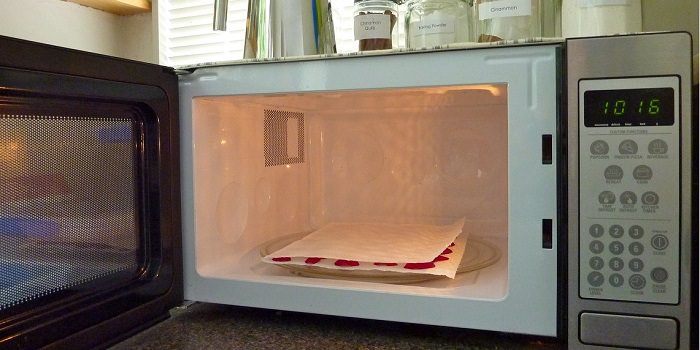Learn how to dehydrate food in the microwave!
Just keep in mind … this is not a good option for many foods such as meat jerky. It’s also important to know that drying food using the microwave may result in an overcooked taste.
I suggest an oven or dehydrator over microwave – but if you are determined to dehydrate food in the microwave … here is how to do it.
READ ALSO: How to Dehydrate Food Successfully: A Beginner’s Guide
How to Dehydrate Food in the Microwave
Preparing to dehydrate foods
There are so many varieties of fruits and veggies you can dehydrate using your microwave at home. For example, you can preserve mangoes, pears, apples, carrots, leafy greens, tomatoes, and even chilies. It may need some time, but the results are worth it.
Here are some basic steps you can follow when preparing the food you want to dehydrate in the microwave:
- Cut fruits and vegetables into thin slices. If they need to be peeled off before slicing or cutting into pieces, by all means, do so. However, an important tip here is to get thinner slices so you’ll have gummier results.
- Make sure the rotating plates of your microwave are clean since you will place your food directly onto the plates. You may use a silicone mat as long as they fit into the microwave.
- Put your fruit or veggie slices on the microwave, make sure they lie flat on the plate with enough space in between each other.
How to dehydrate food in the microwave
After the preparation process, it’s now time to dehydrate your food. The timer must be set for at least 30 minutes or more depending on the fruit or vegetable you want to dehydrate. You can check the manual to see the exact “cooking” time for specific foods.
NB! Use the defrost setting instead of the regular setting to avoid zapped slices.
This is particularly advised if you’re dehydrating mangoes or any other juicy fruits. After 30 minutes, check back and see if you can already flip your mini slices. If they still need a little time to completely dry, adjust your timer.
Sliced apples usually need up to 35 minutes to finish dehydration. On the other hand, mangoes and pears require up to 45 minutes or longer because they contain more juice than other regular fruits or vegetables. Once they’re done, get your cooling rack and place the slices carefully.
Remember that using the microwave to dehydrate foods is only ideal for small amounts of food.
If you want to dehydrate some herbs in the microwave, the following are the basic steps to follow:
- Get up to 5 branches of the herb you want to dehydrate and place them between two kitchen paper. Set your microwave for 3 minutes, check them while dehydrating if needed.
- Remove the kitchen paper with herbs. Let them cool for a few minutes, then see if the herbs are completely dried. You will know if they are ready for storage when the herbs are brittle.
Now, if you feel that the herbs still have moisture, repeat dehydrating for half-minute intervals to make sure they are safely dried before putting in a storage container.
Things to Keep in Mind
Dehydrating food takes time and essentially depends on food type, cut thickness, moisture content, and drying method. Never turn up your microwave to speed up dehydrating time as it will only give you poor quality foods.
Some foods look dry, but when you check the inner part, you might still find some moisture. Storing foods that are not properly dehydrated will only attracts molds and bacteria. Therefore, it’s really important to check on your fruits and veggies after taking them out of the microwave just to be sure.
When dehydrating food in the microwave, do not leave the microwave unattended.





